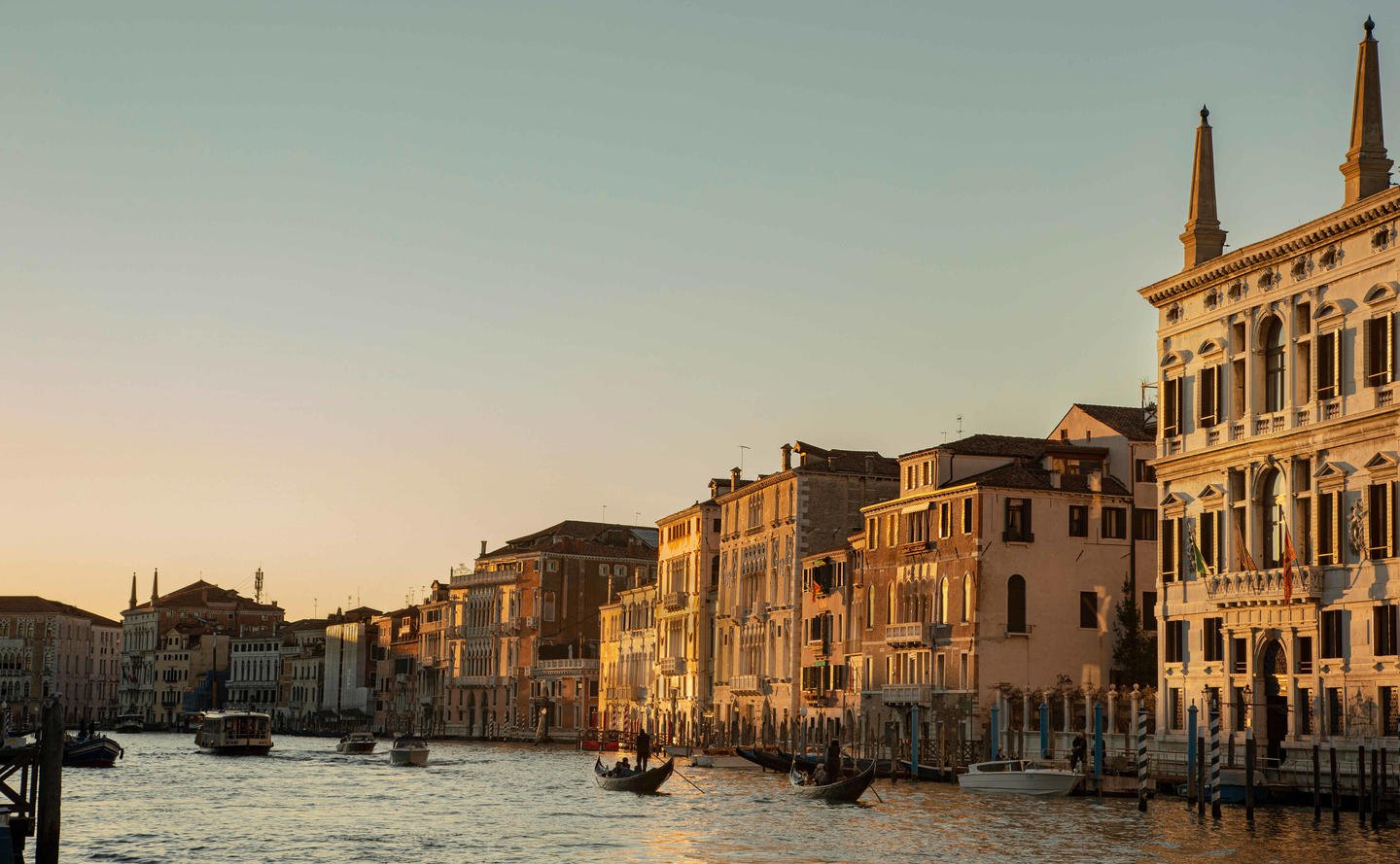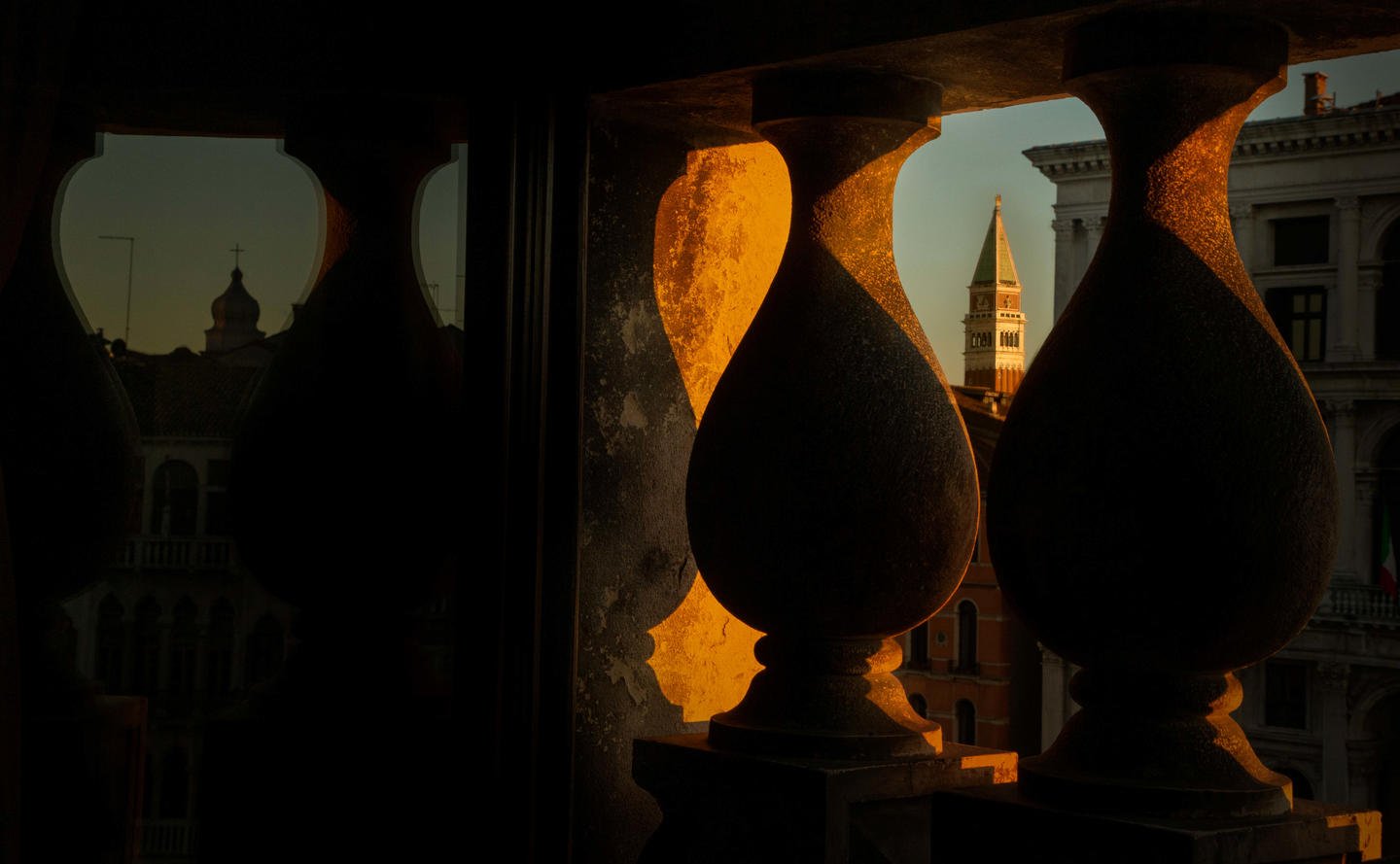Aman과 함께 축제 시즌을 만끽하세요
축제의 경이로움이 가득한 계절에 빠져보세요. 일정을 살펴보고 여정을 시작하세요.
Photography by Alexander Ingham-Brooke
Words by Chris Wallace
Aman Venice, Italy
According to local legend, it was 1600 years ago, in 421AD, that a band of exiles fled the mainland, and the marauder Attila, to find solace in the netherworld that is the Venetian lagoon. Like something out of fairy tale, this shifting, shallow tidal waterworld, would maroon all but the most knowledgeable of navigators trying to make sense of its hidden channels and passages. From this point, the exiles would, in the centuries to come, go on to build one of the richest and singular civilizations of the modern era. On those days the great expeditions departed, whether it was Marco Polo on his way to China, or the blind Doge Dandolo setting out for Constantinople on the 4th crusade, the powerful merchant princes of the Venetian oligarchy would stand on the bridge they’d constructed over the rio alto and watch their investments put out to sea.

Sitting in the library of Aman Venice, only a matter of meters from the Rialto bridge, it is easy to fall into a sort of reverie about the city-state’s history. The leather-bound books behind leaded glass in the deep wood cases are filled with stories of the adventurers, personalities, eccentrics, and crusading doges whose spirits haunt every nook and cranny of Venice.
"...filled with stories of the adventurers, personalities, eccentrics, and crusading...spirits."


The particular scent in this room, heavy with the musks and spices for which Venice came to be known, casts a kind of spell. What is that, I wonder. Frankincense, definitely, maybe myrrh? Sandalwood, but mellow. Clove, pepper.
“It is the leather walls,” Bianca Arrivabene says.
"leather wall coverings... have captured the smells over the years. The smell of time, history and wisdom."
Count Gilberto and Countess Bianca Arrivabene Valenti Gonzaga, owners of Palazzo Papadopoli, live in the private apartments atop the palazzo. She explains that the leather wall coverings, imported from Cordova generations ago, as they were in the finest and most well-appointed houses, have captured the smells over the years. “And of course, you have the books,” she says.
The smell of time, history, wisdom.


One of the more beguiling and consistently intoxicating aspects of Venice is its mystery, its persistent unknowability. The labyrinthine side streets, the shimmering, mirage-like quality of its various vignettes, seeming to change and disguise themselves at every new encounter. Every time I arrive in Venice, I walk the streets as if I am putting the place together again, brick by brick, re-orienting, re-mapping the city.
Venice can feel overwhelming. And an escape, any escape is called for. Entering the grass and garden grounds within Aman Venice is one of the most calming experiences I can think of, the perfect balm for a brain on Venice.



There is a legendary barman in the city— a Venetian, several generations back — who once told me that when the world gets too loud, too chaotic, he will walk along the fondamente here, the stoney pathways that run along the water. To think, or, rather, to avoid thinking. To feel his brain filled with the silky, water sounds of Venice, of oars in water, of prows making their oily progress through the canals, and let the mystery and silence and spell of Venice cleanse his mind and body. You might even hear the softly echoing sounds of song. It may even be you who is doing the singing.
"he walk[ed] the fondamenta... and let the mystery and spell of Venice cleanse his mind and body."
During a recent exhibition there was footage from one of the earliest films ever captured in the city (one of the earliest films made ever, anywhere, shot by the Lumiere brothers in 1896). Taken from a vessel moving up the Grand Canal toward the Rialto bridge, looking north, the film passes an old steam-powered vaporetto, and the outfits of commuters and tourists immediately transport the viewer back to the time of its filming.

The scene looks as though the film might have been made today. And when the camera catches up with a pair of gondolieri piloting their black bow crafts, the history of Venice falls away. As if no time has passed and all of time is occurring at once, everywhere in the city.
And just then, behind the gondelieri, Aman Venice comes into view. There, the garden I know so well, looking almost the same, a hundred years before I was born. There, atop the Palazzo, the cement obelisks, symbols for great naval captains of the former republic, many hundreds of years previously, casting their shadows just as they do now.


Up on the second floor of the Palazzo, in “the games room,” sheathed in powder blue silks, sitting beneath one of the great Tiepolo frescoes in the building, one can get to thinking, a lot, about time. In Venice time has an almost physical property — you can see the 11th century, just there, in this structure, and there a 19th century Murano glass.
It feels real, but also like something that only matters elsewhere, as if only in Paris and Manhattan and Mumbai does one have to think about watches and schedules. That here, in the Venetian lagoon, one can exist in a little eddy outside of the flow, in a kind of mythic safe haven where all of history exists in the same moment, and yet no time is passing at all.
"...in the Venetian lagoon, all of history exists in the same moment, and yet no time is passing at all."

With the historic Palazzo Papodopoli as a stirring base, the essence of Venice is captured through photography and the written word in this, the second of Aman’s Meditations. Accompanied by British photographer Alexander Ingham-Brooke, American journalist Chris Wallace reflects on time spent in the floating city - no place better suited to revealing the transformative nature of travel.
Alexander Ingham-Brooke is a British photographer and filmmaker whose independent films have been included in screenings, exhibitions and film festivals internationally including the Frieze Art Fair London and the 7th Globians Documentary Festival Berlin. His fascinations with portraiture, time, narrative and identity are at the centre of his artistic process, with his work having featured in publications such as Dazed and Confused, and Vogue Italia.
Chris Wallace is an American journalist, essay writer and novelist. His diverse approach to content creation has seen him achieve the positions of US Editor of MR PORTER, Executive Editor of Interview Magazine. Currently he is working as biographer, capturing the life of late photographer, Peter Beard.